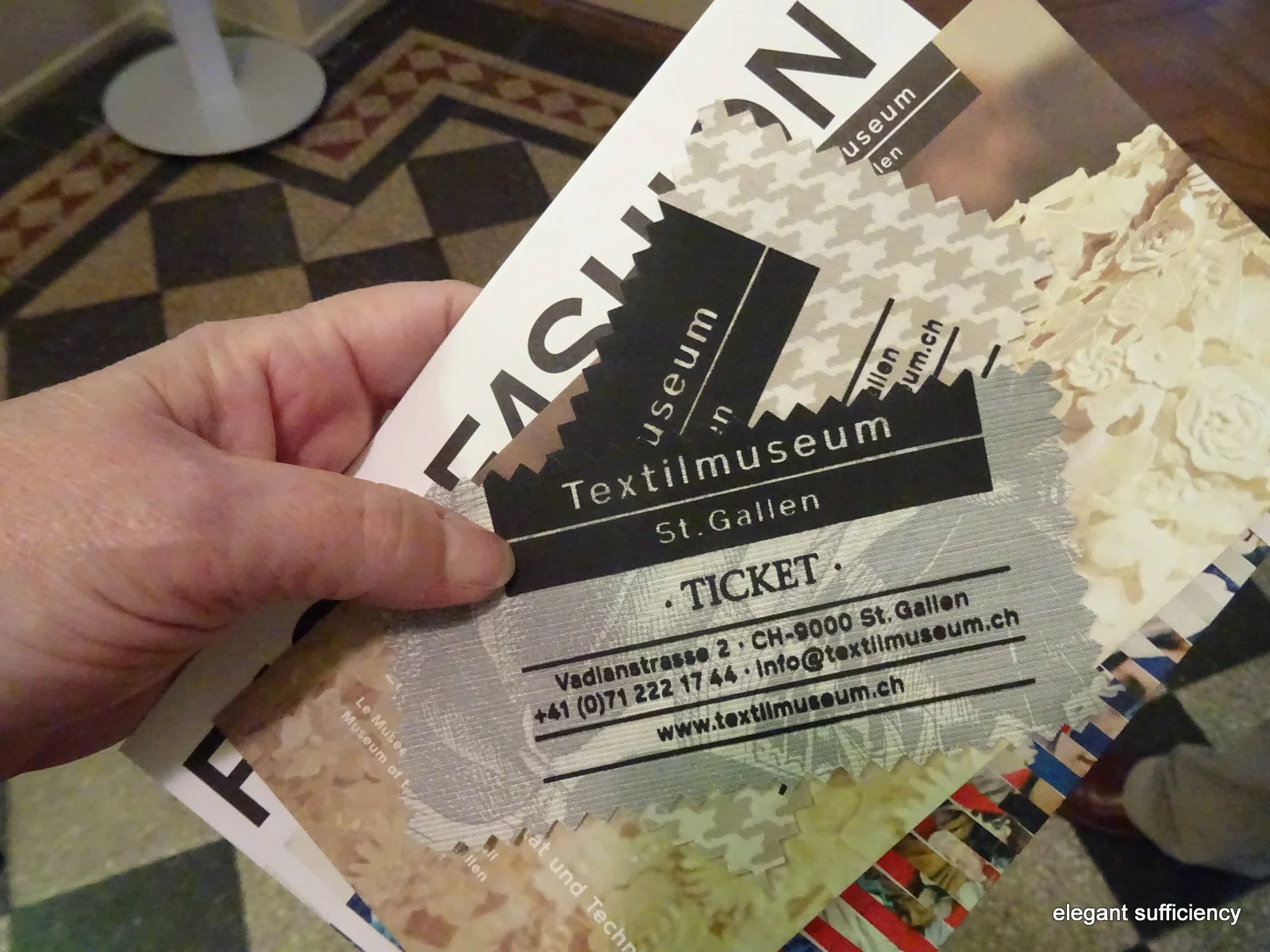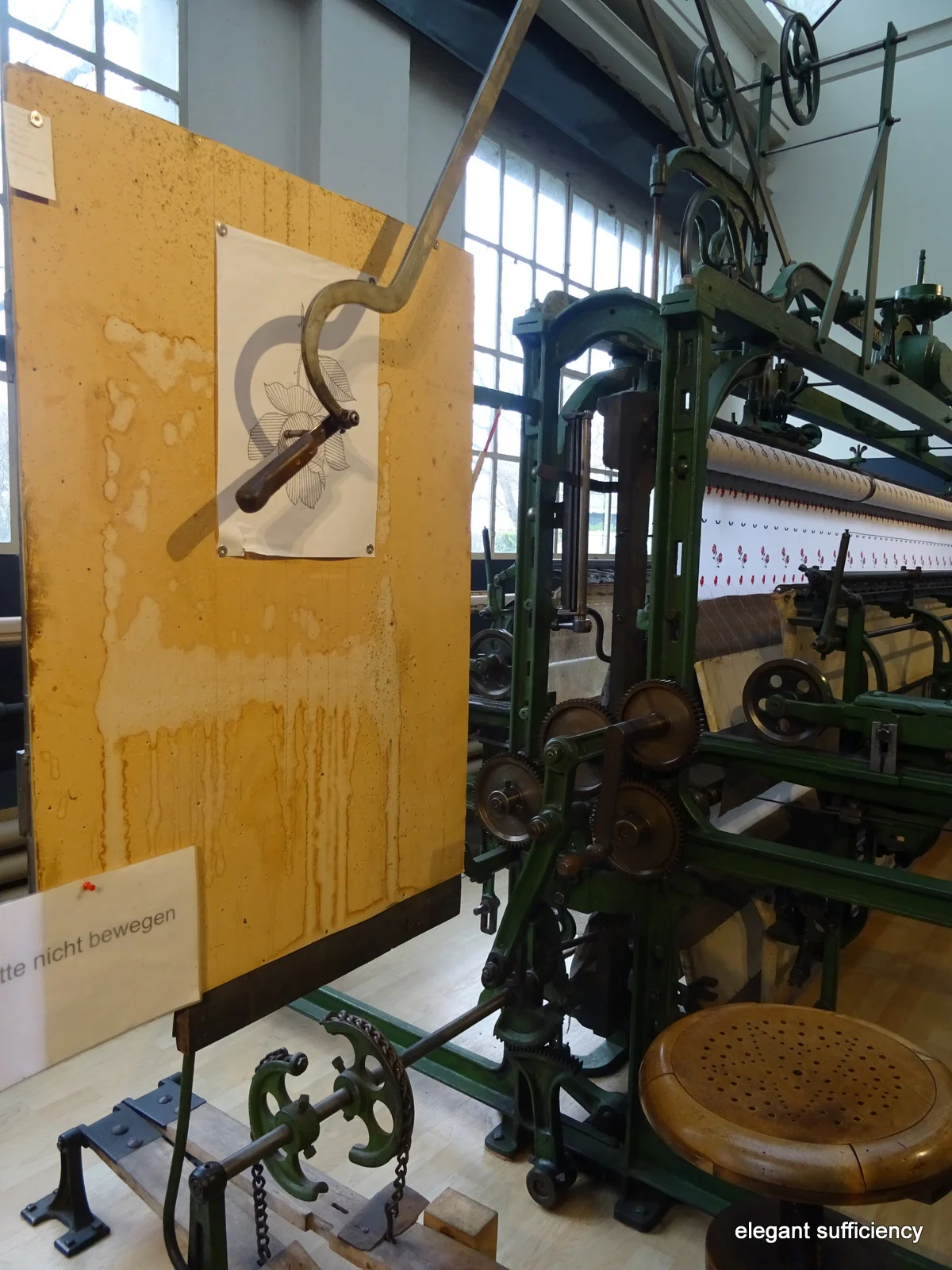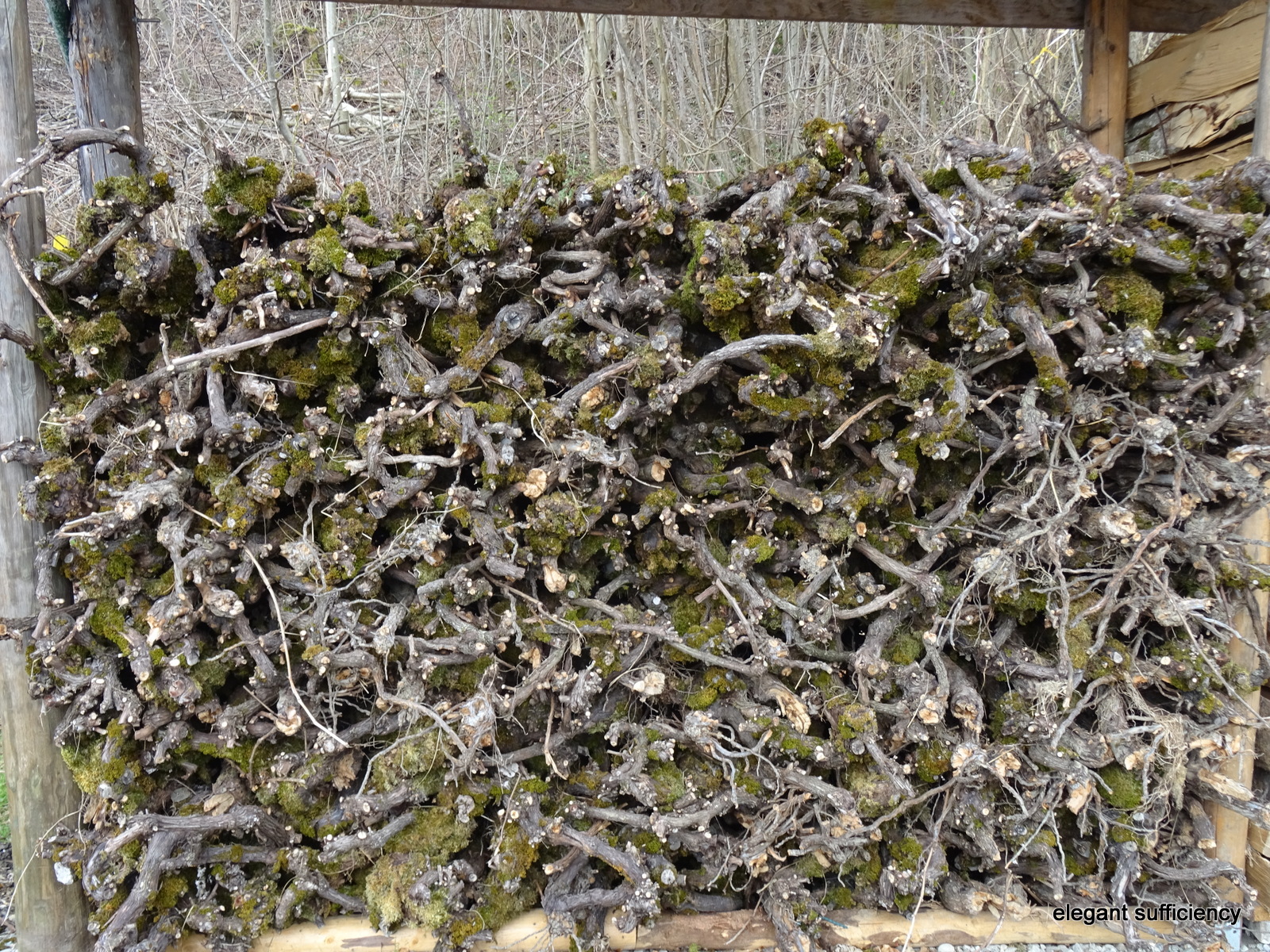A rich textile heritage
This area of Switzerland has a long history of textile design and manufacture and the story is wonderfully recorded in the Textile Museum in St Gallen. I’d noted what promised to be an interesting exhibition on the website and opening the curtains on a rainy Saturday morning we lost no time in making our way there.
Of course, the tickets are made of fabric.
We headed straight to the top of the building, with the intention of working our way down through the exhibits. The first exhibition was Fast Fashion.
The term “fast fashion” denotes a corporate strategy which aims to bring new fashion into the shops at ever shorter intervals. Classic fashion segments such as haute couture, ready-to-wear and medium-priced off-the-peg clothes limit themselves to two collections a year, whereas cheap labels launch up to twelve collections within the same period of time. These companies aim to draw the media’s attention to themselves, to lure primarily young customers into the shops and to animate them to make purchases.
If consumers and commerce profit from the masses of fashion articles put on the market at bargain prices, many of those involved in the production process have to pay a high price: long working days with minimum wages determine the lives of the textile workers who produce cheap fashion under sometimes disastrous conditions. They have no social security and educational opportunities. Health problems and environmental pollution are the consequences of a corporate policy that is ruthlessly geared to profit maximisation.
It was indeed a thought provoking and rather troubling exhibition and the true cost of cheap clothing was set out clearly in no uncertain terms. I made notes on some aspects to follow up later, in particular the role of young people using social media to post their “haul videos”. I’d not come across such things before, but foresee an interesting if rather shocking evening’s viewing.
The contrast with my parents’ generation of thrift and make do could not have been better explained than the case of ideas for making a new dress from two old ones. It also highlighted the high level of technical skills which have been lost in the meantime: I’m not sure I would have the confidence to create some of those alterations!
The exhibit was indeed interesting and presented some good points, but possibly overstated the general issue: we soon got the message and were ready to move on. But as ever in such places, I was as interested in the mechanics and design of the exhibition itself, in this instance, how the information and examples were shown in two languages (English on this side, German on the other) and hung in a kind of production line setting. Very clever.
Down one floor, there was a more general exhibit entitled “dreams and realisation”. Here was more than half a millennium of textile heritage.
Pieces from the Middle Ages were so well preserved and began the story which continued on a kind of timeline, through the introduction of turkey red dye
to printed patterns and detailed designs.
The motifs were accurate and precise and right from these early stages, it was clear that the strengths of the Swiss textile industry were precision and quality.
The samples were so well documented and archived, creating a marvellous resource for contemporary designers.
Displayed in large glass cabinets, one could spend days here, just looking, marvelling and imagining the technical skills and tenacity that went into creating these masterpieces of hand work.
One cabinet was devoted to a single piece of exquisite whitework, approximately one metre square.
I’m not sure that I could have listed all the specific embroidery techniques which were evident in that one piece of work alone
and clearly I was not the first to marvel at and appreciate the skills involved, for the gold medals awarded to the maker were also on display in the cabinet, including three gold medals from Parisian Exhibitions of the 1870s and a mere bronze from London.
Such high quality workmanship was valued worldwide, as evidenced by account books showing exports to the USA
and bills of sale, including one for 32 embroidery designs, 32 sketches and 32 card copies of such, totalling 169.60 SFr.
The exhibition continued to the present day, with fascinating and very typical samples from the 1960s and 70s.
Shown alongside were pattern cards and pictures of modern industrial embroidery machines creating the high tech fabrics the area specialises in today.
Metal fabrics and laser cut designs, specialist and technically precise, for whilst the industry here has capitalised on the heritage it has also moved with the times and remains a world class centre for high quality, innovative textiles.
Now, I’d already thought I could spend a whole day here, possibly just in that one exhibition alone. To explore the next part fully, I’d need at least a week, for on the ground floor is the library. I mentioned it in passing in my previous post when we were last here, but today I had a little more time to look around.
The open pattern books on the counter are just a clue to what lies behind those glass doors in the cabinets which line the walls of the room.
Each sample, carefully referenced and labelled, each drawing or sketch a small masterpiece in itself.
Flicking through the books, each page invites us to linger and marvel at the beauty. Could this one really be better than the last? Or the next? My Hero and I were both captivated by each page in the book and couldn’t decide whether to spend longer looking at this amazing catalogue or move on to the next…
Because there were more. Hundreds more.
Contemporary magazines too. Every one concerning fashion and textiles you could think of, from all over the world, in every language.
Plenty to demonstrate that I’m not as au fait with British textile magazines as I thought I was, too. PomPom was a new one for me.
I was now going to investigate around the corner, but as I passed by, I couldn’t resist another look at that catalogue of edgings.
Though I’m sure the answer isn’t far away…
Much as I’d have loved to have taken the time to research the answer to his question more fully than I could explain from my own knowledge and experience, I don’t think he was really *that* interested and anyway, there were further distractions.
Shelves and shelves of books I recognise from my own collection alongside many I don’t.
Some, I’d like to read more closely and yes, possibly chat as well,
but then I discovered the accessories section, with details of gloves, shoes and buttons.
I’m sorry, I didn’t have time to explore upstairs as well.
The library was so beautifully organised with everything in place and on each shelf was a small plan of the sections together with the advice “please don’t replace the books yourself, you can leave them here” (ie don’t mess up our system by putting a book back somewhere that we’ll never find it again!)
We couldn’t leave the museum without a peek in the other ground floor room, but sadly, the embroidery machine wasn’t in operation today, unlike on our last visit. Never mind, there were a few more things of interest around,
like samples of couture fabrics for the Autumn Winter 2017 collections,
one of which was rather interesting.
Further couture samples and a video of a catwalk show from AKRIS which we sat and watched, recognising that were we to sit there any longer, we might not feel much like getting up and moving again!
So we gathered up our bags and belongings from the cloakroom, leaving the cute tailcoat with the St Gallen tailor’s label hanging there.
At the end of April, the museum will stage an exhibition as part of a wider, regional textile project which looks remarkably interesting. The fun continues here and though we will probably be back in Switzerland in the Autumn, whether we will have a chance to see it remains to be seen. For now, I am thankful for a marvellous morning here!











